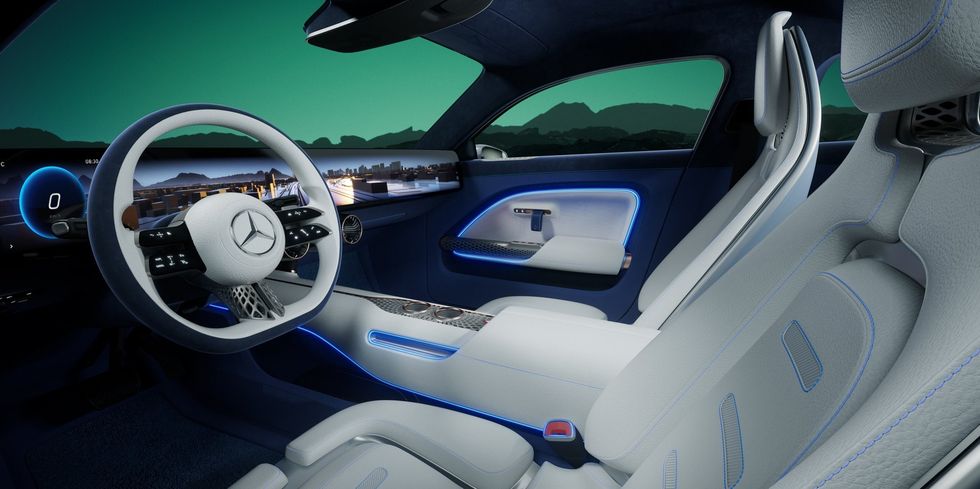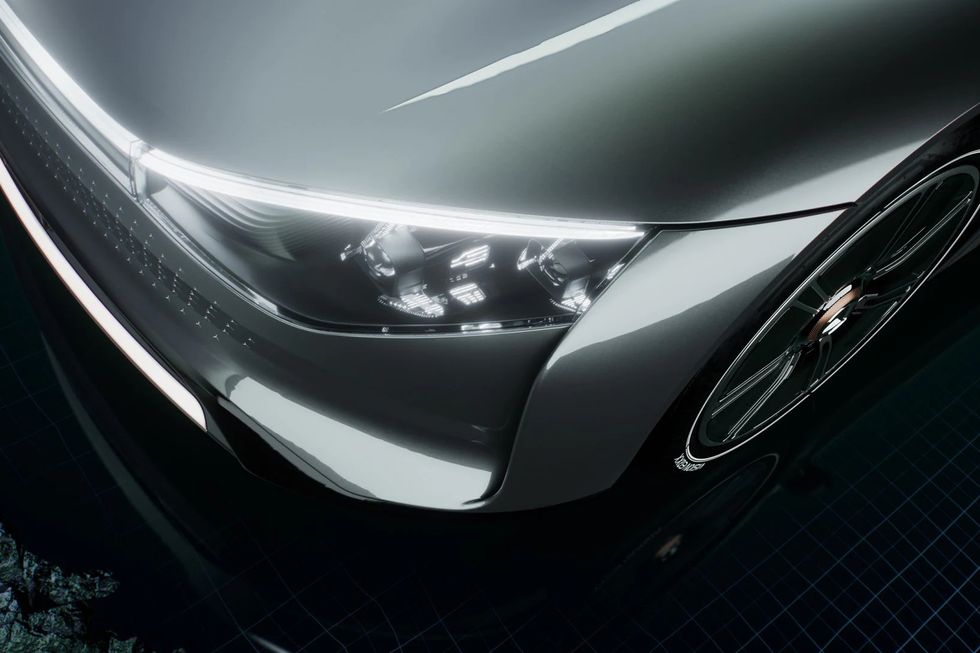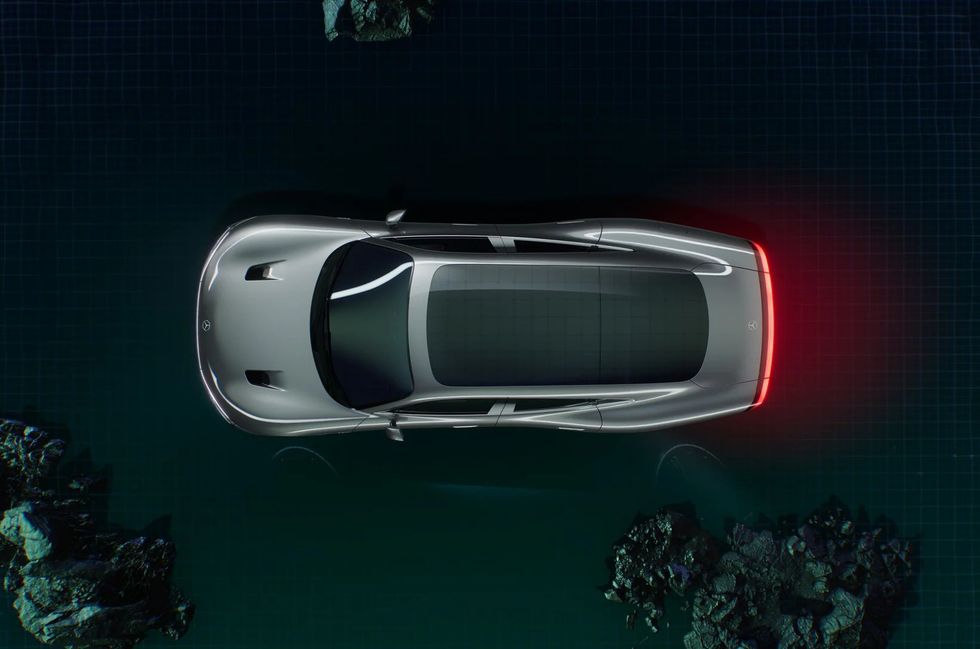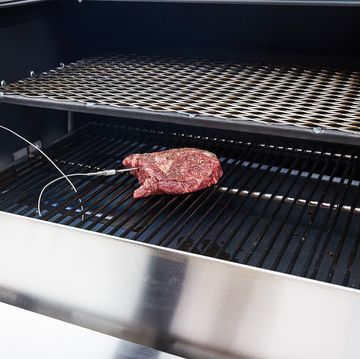Last week, Mercedes released its Vision EQXX concept at the 2022 Consumer Electronics Show, flaunting a seemingly mind-boggling range figure of 621.4 miles. If you spit out your Cheerios and claim it’s vaporware, I wouldn’t blame you. It’s important to note that these range figures haven’t yet been validated by anyone outside of Mercedes-Benz. But the automaker said its engineers have worked long and hard with the big foreheads from its Formula 1 team to achieve such a feat of engineering.
Range anxiety has long been one of the Achilles’ heels of electric vehicles. However, with many automakers striving for consistent gains in performance and efficiency, we now have a plethora of EVs that can go up to 300 miles on a single charge. Mercedes-Benz is relatively new to the genre but has rapidly ascended to prominence with vehicles like its EQS, which is currently one of the most aerodynamic—and therefore efficient—vehicles on sale right now. If this tech lives up to its promise (and the claims Mercedes made at the trade show), it could help further shrink the gap in range between internal combustion vehicles and EVs.
How Does It Go That Distance?
Whether you think the EQXX’s aesthetic is hot or not, it was sculpted to slice through the air using as little effort as possible. With a drag coefficient of just .17, it will be one of the most aerodynamic road-going automobiles that the world has ever seen. (Mercedes’ EQS currently holds that spot with a drag coefficient of just .20.)
Unsurprisingly, the front fascia of the EQXX is designed for maximum efficiency, with its frontal area much smaller and sleeker than even the CLA-Class. These clever design elements continue toward the rear of the vehicle, where the track width—how far the wheels are spaced apart on one given axle—at the back is narrower than it is at the front. The vehicle also has transparent wheel covers to eliminate turbulent air coming from the wheels while simultaneously showing off its rose-gold magnesium rims.
When adding range to an EV, the easiest option is to fit a bigger battery. While this does add range, it’s a very messy solution that also wreaks havoc on vehicle dynamics thanks to the enormous weight of the battery pack. Instead of taking that route, Mercedes opted to increase the energy density of its existing battery system. Using silicone anodes and Formula 1-inspired material science, the German automaker produced a propulsion system that takes up 50 percent less space and weighs 30 percent less than other batteries of similar capacity. These silicone battery anodes replace the existing graphite anodes, promoting higher energy density and improved fast-charging capabilities.
In achieving such a feat, Mercedes-Benz reached toward the crucible of motorsport, leaning on its team of engineers who worked in harmony with the brand’s Formula 1 big wigs at High-Performance Powertrains and Mercedes-Benz Grand Prix. Along with optimizing drivetrain efficiency, the team designed a lightweight battery housing.
Previous Hints of Aerodynamic Excellence
While the German automaker isn’t best known for lighting the design world on fire, it has produced its share of efficient vehicles. Its first major success was the W124, which arrived in 1984 with a drag coefficient of just .28—for reference, the latest Toyota Prius has a .24 coefficient of drag—making it one of the most aerodynamic automobiles of its day. Mercedes did this with plastic panels that lined the underside of the car, as well as its single wiper blade that could reach the corners of the windshield while cutting through the air much more easily.
Keen gearheads might also know of the C11 project vehicles that Mercedes released in the 1960s and ’70s. While one of the primary goals of the project was to experiment under the skin with different engine configurations and suspension setups, both vehicles were clad with lightweight fiberglass bodywork. The second car—which reportedly had a drag coefficient of .19—reached 200 mph in 1978.
So we have reason to believe that the EQXX could live up to the hype. While increasing the energy density of the batteries will definitely yield considerable improvements, it’s all for naught if the vehicle hits the air like a deployed parachute.
Will We See It On the Roads?
While most EVs aim to blend in with the pack, the form-follows-function ethos of the EQXX makes it nothing but striking to look at. The bonkers design reminds me of what McLaren did with the Senna and the Speedtail: two cars that looked as if they were sculpted in a wind tunnel before the design team had put pen to paper. And, despite its Formula 1-inspired engineering, the interior of the EQXX looks like a genuinely nice place to sit.
As we head toward an all-electric future, Mercedes says that sustainable mobility won’t be measured by raw power or 0-60 times, but will instead be measured by efficiency—a mature statement from the automaker that currently builds barnstormers like the AMG GT Black-Series, or even the latest EQS 580, which has over 516 horsepower. Despite the German automaker’s motorsport pedigree and a history of building some of the fastest vehicles in the world, the top brass is sticking to its story when it comes to a sustainable future. “The technology program behind the Vision EQXX will define and enable future Mercedes-Benz models and features,” says Markus Schäfer, Member of the Board of Management of Daimler AG. If this isn’t a one-and-done concept for Mercedes, we would be keen to see the German automaker apply the same technologies to its upcoming EVs.
Matt Crisara is a native Austinite who has an unbridled passion for cars and motorsports, both foreign and domestic. He was previously a contributing writer for Motor1 following internships at Circuit Of The Americas F1 Track and Speed City, an Austin radio broadcaster focused on the world of motor racing. He earned a bachelor’s degree from the University of Arizona School of Journalism, where he raced mountain bikes with the University Club Team. When he isn’t working, he enjoys sim-racing, FPV drones, and the great outdoors.

















